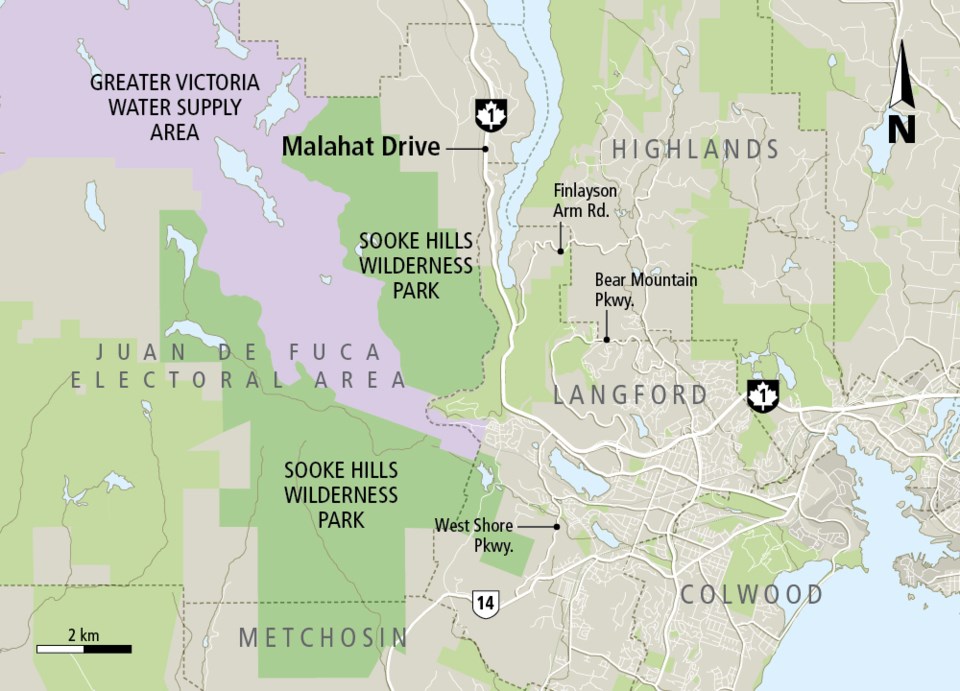There should be no Malahat Highway bypass built through the Sooke Hills Wilderness Area, Capital Regional District parks committee members agreed Wednesday.
The decision, which comes on the heels of a similar resolution passed by water commissioners last week, was made after directors heard from scores of residents arguing that highway expansion is not the answer to traffic delays on the Malahat.
“Highway expansion is not the solution. It only puts more cars on the road as we can see. Better public transit is,” said longtime environmental activist Vicky Husband, adding it is time to upgrade and use the existing E&N Rail right of way. “We need to plan for a fast train on an upgraded, revitalized track to handle large numbers of people.”
Frances Litman said it’s time to stop investing in fossil fuel infrastructure.
“We don’t need another McKenzie interchange disaster that has carved away large tracts of Colquitz River Creek Park, where active salmon-bearing streams have now become silt and toxic dumping grounds, and thousands of trees have been removed and blasting continues,” said Litman, a one-time candidate for the federal Green Party. “Or another $23-million-plus McTavish Road interchange, the site of numerous crashes since it was completed.”
Members of the parks committee endorsed a resolution opposing a road being built through the Sooke Hills Wilderness Area. The motion cites “regional parks values — including biological diversity, protection and restoration of natural ecosystems, habitat connectivity and opportunities for outdoor recreation and wellness.” It also calls for CRD board chairman Colin Plant to meet with Premier John Horgan to stress the urgency of the situation for residents and the CRD.
“It’s hard to imagine now that this NDP government is even considering opening an alternative highway route through Sooke Hills Regional Park,” said Alison Spriggs, who campaigned in the 1990s for the creation of the Sea to Sea Greenbelt that runs from the Saanich Inlet through the Sooke Hills to the Sooke Basin.
“This bold initiative [the greenbelt] would protect over 100 square kilometres on the capital region’s western horizon,” Spriggs said, “a conservation vision large enough to provide viable long-term habitat for our region’s native plants and animals; to protect the capital region’s stunning green backdrop; to provide outstanding access to the natural world right at our doorstep; to provide a defined boundary to manage and contain urban sprawl and to buffer and protect our drinking water supply.”
Victoria Coun. Ben Isitt, who chairs the committee, said the members of the public were effective in laying out the rationale for not building on the CRD land. Isitt said the rail line is a public amenity available to the province for transportation on the south Island.
“Our mandate here at the parks and environment committee is the preservation and restoration of park land and advancement of ecological values, including demonstrating climate leadership,” he said. “That is a distinct mandate from the provincial government mandate of regional and provincial transportation.”
Isitt said the CRD can work with the province to address transportation challenges, but must do so in a manner consistent with its mandate.
Langford Coun. Lanny Seaton was the only committee member to vote against the motion.
“I think we need to look at all the options and that’s what the highways department says they’re going to do — look at all the options. So let’s look at all the options,” he said.



